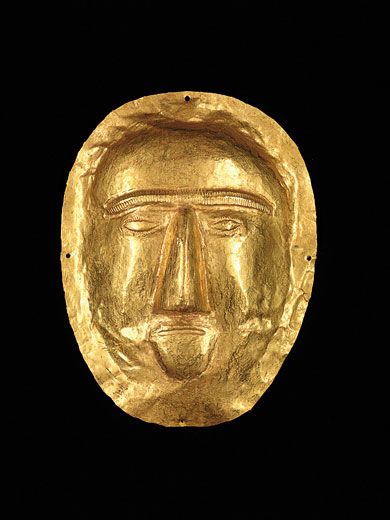The Sackler Celebrates 25 Years of Asian Art
From Tibet to the Arabian Peninsula, the gallery has been exploring the beauty of the world for a quarter of a decade
/https://tf-cmsv2-smithsonianmag-media.s3.amazonaws.com/filer/Secretary-funerary-mask-631.jpg)
The Dalai Lama can be trusted to recognize an impressive donation of Tibetan art when he sees it. So it was significant that in July 2011, he was on hand for the announcement, in Washington, D.C., that Alice S. Kandell was giving her beautiful “shrine room”— including 220 Himalayan Buddhist bronzes, paintings, ritual instruments and more—to the Smithsonian’s Sackler Gallery.
That acquisition represented another step in the growth of the considerable reputation of the Sackler, but it’s just one in a string of successes since it opened in September 1987. This fall we will celebrate the 25th anniversary of the museum even as we make big plans for the next quarter century.
The museum was founded to house the generous donation of 1,000 artworks by Arthur M. Sackler, a successful physician and medical publisher who loved art. His gift included priceless Chinese jade pieces and Persian metalwork—and it created a nimbler counterpart to the existing Freer Gallery of Art, whose benefactor, Charles Lang Freer, didn’t want his Asian and American pieces lent out, or “outside” exhibits displayed. Today the two museums operate symbiotically, under director Julian Raby. Dame Jillian Sackler, Dr. Sackler’s widow, remains engaged with their namesake museum, enthusiastically supporting its activities. Recently she gave $5 million to endow the Freer and Sackler directorship, and she’ll serve as the honorary chair of a late-November anniversary gala.
The celebration has in fact extended throughout the year, and included exhibitions centered on the themes “Japan Spring,” “Indian Summer” and “Arabian Autumn.” An exhibition during the summer featured lavish manuscripts and paintings collected by India’s Mughal emperors, from the 1550s to 1650, and it was paired with a daylong festival of Indian culture that included performances of classical and folk Indian music, crafts for kids and, for the bold, lessons in Bollywood dance.
“Arabian Autumn” will include a blockbuster show featuring 40 years’ worth of archaeological discoveries on the Arabian Peninsula. Meanwhile, the final week of November, in addition to the gala, will see lectures and a book festival. (Azar Nafisi, the author of Reading Lolita in Tehran, will be there.) The dynamic nature of the Sackler will be reinforced in the years ahead by building the museum’s collection of contemporary art. “Now is the time to really think about creating a much different Sackler,” says Raby, “one in which the contemporary art component becomes increasingly important.”
The future of the Sackler looks bright—in every respect. We’re looking at architectural revisions that will admit more natural light to the museum, and we are working on making the entrance more prominent and inviting. Last year, 945,000 people came through the Sackler and Freer, but we want even more visitors to discover their wondrous collections.
